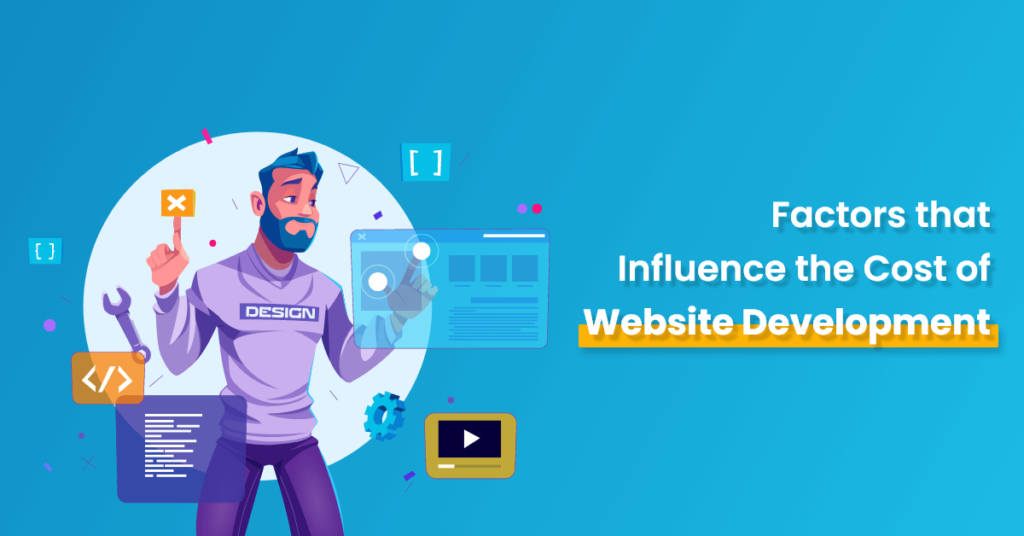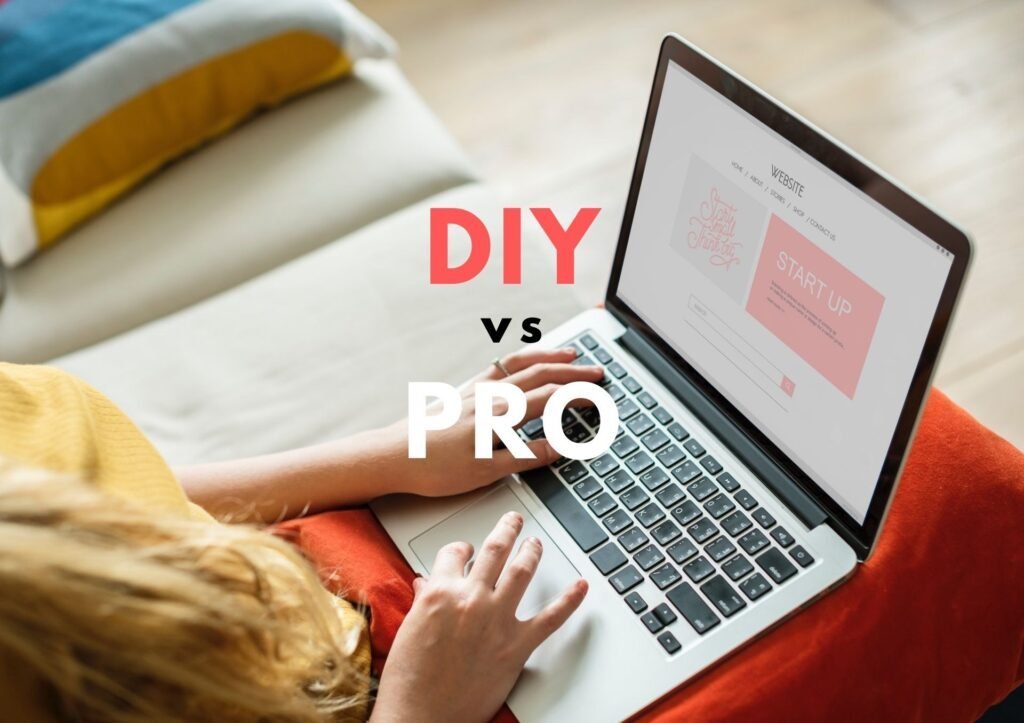Understanding the Costs of Website Development in Sacramento
In today’s digital landscape, a well-crafted website is more than just an online presence; it’s a vital tool for growing your business, especially for local Sacramento companies. However, one of the most significant hurdles that small businesses face when embarking on a website project is understanding the associated costs of website development in Sacramento.
At Social Peak Media, we specialize in helping Sacramento businesses navigate these challenges, ensuring that they not only get a website that meets their needs but also fits their budget.

Credits to DevTeam.Space
Factors that Influence Website Development Costs
The cost of website development can vary widely depending on several factors. As a small business in Sacramento, it’s crucial to understand these elements to make informed decisions that align with your business goals.

1. Scope and Complexity of the Project
The scope of your website project is the most significant factor in determining costs. A simple website with a few pages and basic functionality will naturally cost less than a complex site with multiple features such as e-commerce capabilities, user logins, or extensive multimedia content. At Social Peak Media, we emphasize starting with a clear understanding of your project’s scope to avoid unexpected expenses later.
2. Design Requirements
Another key factor is the design of your website. Custom designs, which reflect your brand’s unique identity, typically cost more than pre-designed templates. While custom designs offer a higher level of personalization, templates can be a cost-effective solution for businesses that need a functional, aesthetically pleasing website without breaking the bank.
3. Content Creation
Content is king, and creating high-quality content for your website—be it text, images, or videos—can add to the cost. Whether you’re crafting the content yourself or hiring professionals, the investment in well-crafted content pays off in user engagement and SEO performance. As part of our services at Social Peak Media, we help you weigh the options to find the right balance between cost and quality.
4. Functionality and Features
The features you need will significantly influence the cost of your website. For example, an e-commerce site with a shopping cart and payment processing capabilities will be more expensive than a simple blog or portfolio site. Integrating third-party applications, custom plugins, or advanced security features also increases costs. Understanding your business needs allows us to recommend the most appropriate features without unnecessary extras.
5. Developer Expertise and Experience
Hiring a highly experienced developer or a specialized agency like Social Peak Media often comes with higher upfront costs. However, the value brought by experienced professionals often translates to a more robust, scalable, and future-proof website, reducing potential long-term expenses and the need for constant updates or repairs.
How to Budget for a Website Project
Budgeting for a website can be daunting, especially for small businesses that may not have a clear picture of what they need or what it will cost. Here’s how to create a realistic budget that ensures you get the website you need without financial strain.

- 1. Define Your Objectives Start by outlining what you want your website to achieve. Are you looking to sell products online, showcase your portfolio, or provide information to potential clients? Defining your objectives helps prioritize what’s essential and what can be phased in later, making it easier to align your website’s features with your budget.
- 2. Research and Get Quotes Gathering quotes from different developers or agencies can give you a ballpark figure for your project. When comparing quotes, ensure that you’re comparing apples to apples—understanding what each quote includes and excludes. At Social Peak Media, we offer transparent pricing and detailed breakdowns to help our clients understand where their money is going.
- 3. Allocate Funds for Maintenance Remember that your website is not a one-time expense. Regular updates, security patches, content additions, and occasional redesigns mean that you’ll need to allocate part of your budget for ongoing maintenance. Planning for these expenses upfront helps avoid surprises down the road.
- 4. Prioritize Your Spending If your budget is tight, focus on the essentials first. Perhaps you don’t need all the bells and whistles right away. We often recommend a phased approach at Social Peak Media, where we launch a minimal viable product (MVP) and add additional features as your budget allows and your business grows.
- 5. Be Prepared for Contingencies Always include a contingency in your budget for unexpected costs. Whether it’s additional features that you realize you need or minor tweaks during the development process, having a financial buffer can save you from stress later.
Comparing Costs: DIY vs. Professional Website Development
As a small business owner in Sacramento, you might be tempted to cut costs by building your website yourself. While DIY website builders like Wix or Squarespace offer affordable and user-friendly options, they come with their own set of limitations. Here’s a comparison to help you decide the best route for your business.

1. Upfront Costs
DIY website builders generally have lower upfront costs. You pay a subscription fee, and you’re ready to start building. However, these savings can be deceptive. As your needs grow, you may find yourself paying for additional features, plugins, or third-party services, which can quickly add up. On the other hand, hiring a professional service like Social Peak Media might require a larger initial investment, but it typically includes everything you need from the start.
2. Time Investment
Building a website yourself requires a significant time investment, particularly if you’re not familiar with design or coding. This is time that could be spent focusing on other areas of your business. By contrast, hiring professionals frees you up to do what you do best—running your business—while we handle the technical details.
3. Quality and Customization
DIY platforms are limited by their templates and built-in features. If you need custom functionality or a unique design, these platforms can fall short. A professionally developed website, however, can be tailored to your exact specifications, providing a better user experience and a more robust platform for growth.
4. SEO and Performance
Professional developers bring expertise in SEO (Search Engine Optimization) and website performance that most DIY platforms simply can’t match. A well-optimized website is critical for visibility in search engines, which directly impacts your business’s ability to attract new customers.
5. Support and Maintenance
One of the biggest challenges of a DIY website is ongoing support. When something goes wrong—or when you need to make updates—you’re often on your own. Professional developers offer ongoing support and maintenance services, ensuring that your website remains up-to-date and functional.
Tips for Saving Money on Website Development
Cost is a concern for many small businesses, but there are ways to reduce expenses without sacrificing quality. Here are some tips for getting the most value out of your website development budget.
- 1. Start Small If budget is a constraint, consider starting with a smaller, simpler website and scaling it over time. Focus on the essential features that will help your business grow, and add more complex functionalities as your budget allows.
- 2. Use Templates Wisely While custom designs can be expensive, using a well-chosen template can give you a professional look without the high cost. Many templates are highly customizable, allowing you to adjust colors, fonts, and layouts to match your brand identity.
- 3. Invest in Quality Hosting Choosing a reliable hosting provider may come with a higher monthly cost, but it can save you money in the long run by improving your website’s speed, security, and reliability. A good hosting service also provides better support, which can be invaluable if issues arise.
- 4. Plan for Future Needs When planning your website, think about your future needs. While it might be cheaper to opt for a basic setup now, investing in a platform that can grow with your business could save you from costly migrations or redesigns later.
- 5. Do It Yourself—Strategically If you have the time and technical know-how, consider handling some aspects of your website development yourself. For example, you might create your content or manage your SEO efforts, while leaving the more complex tasks to the professionals.
What to Expect During the Website Development Process
Building a website is an exciting but often overwhelming process. Understanding what to expect can help ease some of the stress and ensure a smoother experience.
1. Initial Consultation and Planning The process usually begins with an initial consultation, where we discuss your goals, budget, and vision for your website. This phase is crucial as it sets the foundation for the entire project. We at Social Peak Media take the time to understand your business and tailor our approach to meet your specific needs.
2. Design and Development Once the planning is complete, we move on to design and development. During this phase, we’ll create wireframes and mockups to give you a visual representation of your website. After your approval, we begin the actual coding and development. You’ll have regular opportunities to review the progress and provide feedback to ensure the final product aligns with your expectations.
3. Content Creation and Integration While the design is being finalized, content creation takes place. Whether it’s writing copy, sourcing images, or producing videos, this step is essential for making your website engaging and informative. We can assist with content creation or integrate content you’ve already prepared.
4. Testing and Launch Before your website goes live, we conduct thorough testing to ensure everything works smoothly. This includes checking for broken links, optimizing load times, and ensuring compatibility across different devices and browsers. Once we’re confident everything is in order, we’ll launch your website and continue to monitor its performance.
5. Post-Launch Support The launch isn’t the end of the journey. We provide post-launch support to address any issues that may arise and to help you make the most of your new website. This could include additional training on how to manage your content, ongoing SEO efforts, or periodic updates to keep your site secure and up-to-date.
FAQs
Conclusion
Understanding the costs of website development in Sacramento is crucial for any small business looking to establish or enhance their online presence. By knowing the factors that influence these costs and how to budget effectively, you can ensure that your investment in a new website yields the best possible returns. Whether you’re considering a DIY approach or hiring a professional agency like Social Peak Media, being informed is the first step towards a successful project.










